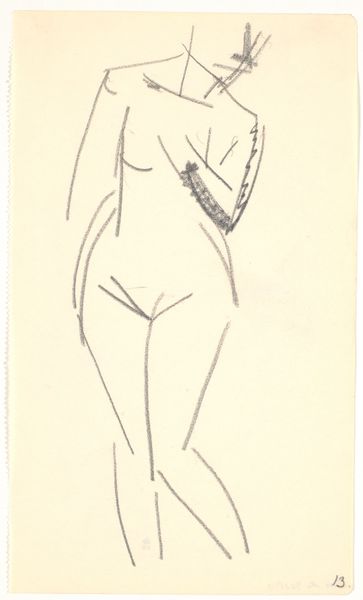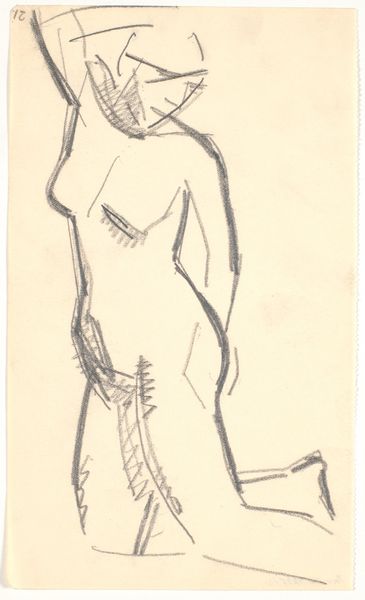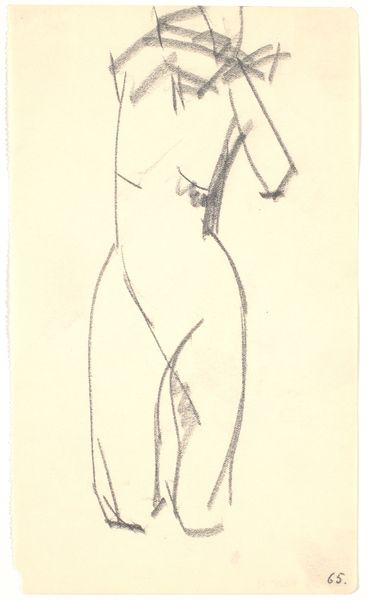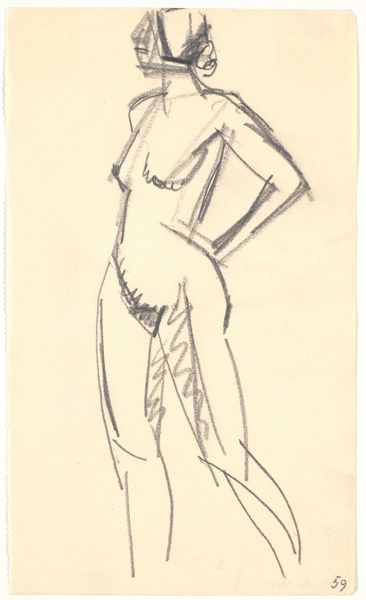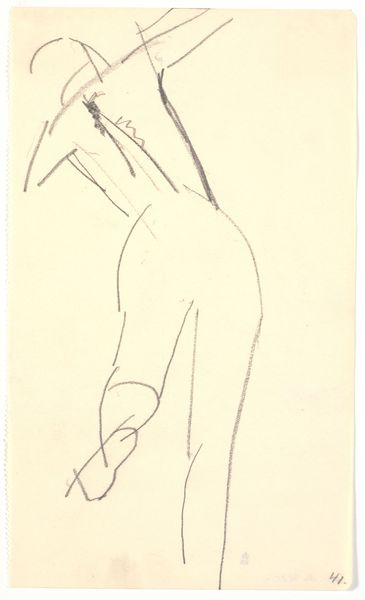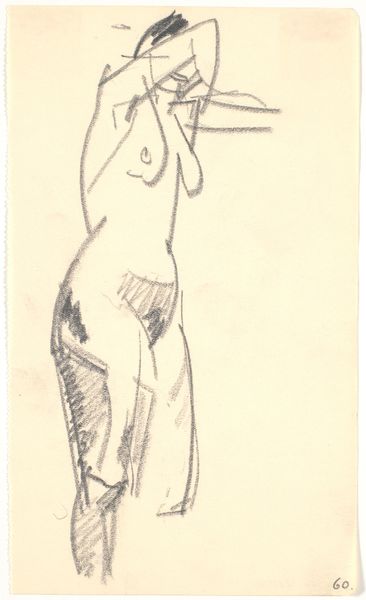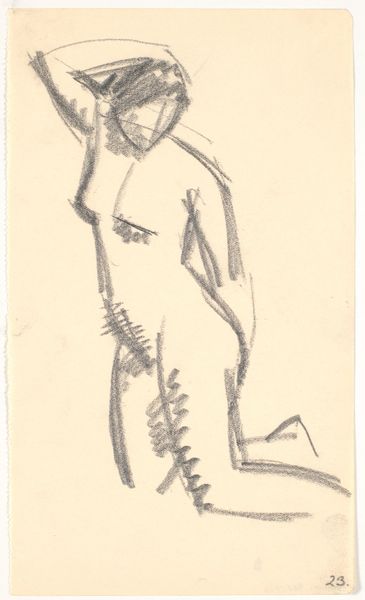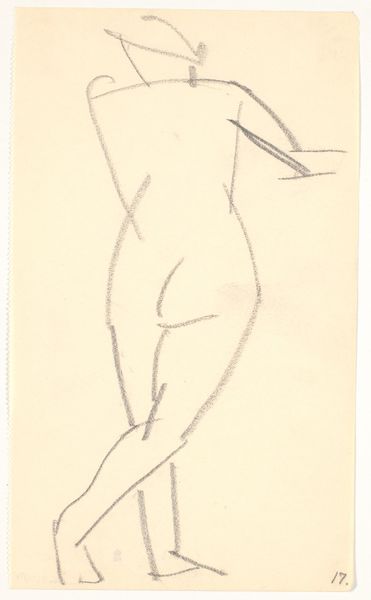
drawing, pencil
#
drawing
#
figuration
#
pencil
#
nude
Dimensions: 209 mm (height) x 124 mm (width) (bladmaal)
Curator: Welcome! Today, we’re exploring “Stående model,” a pencil drawing by Karl Isakson, created between 1914 and 1915. Editor: My first impression? There’s an immediacy to it. The figure is sketched so simply, almost like a blueprint, but it conveys such intimacy, despite the subject being a nude. Curator: Indeed. The sparseness highlights Isakson’s command over the medium. Graphite allows for subtractive techniques, creating textured hatch marks and contour shading, so the form emerges not only by adding, but by implying depth using only lines. Editor: It’s striking how Isakson subverts conventional, idealized forms in a way. This is not just about rendering a body but suggesting vulnerability, especially in how the subject's arm shields their torso, questioning dominant patriarchal gazes of that time. What are your thoughts about Isakson's choices regarding medium? Curator: I agree; the chosen economy of lines points towards Isakson’s broader engagement with material constraint as expressive possibility. Drawing was comparatively economical as artistic production shifted from ateliers and class structures. Editor: It also appears there is no erasure of guidelines. The social aspect makes me question if Isakson made an intentional commentary on privacy and openness during that period. It might be interesting to connect that observation with increased discourse and contestations about nudity within the culture of visual arts back then. Curator: Yes, I see that connection clearly. The artistic process becomes transparent, laid bare much like the subject within the drawing, so Isakson emphasizes a kind of truth of "making". The nude becomes available to reinterpretation through shifting social lenses, not static ideals but constructed views of beauty. Editor: This work highlights art's potential in contributing to dialogue regarding gender norms of visual representation and the role artists may play challenging viewers' expectations! Thank you! Curator: Indeed. Isakson’s “Standing Model” prompts us to contemplate artistic media and subjectivities, pushing back against assumptions, creating space to consider context of gendered ways of seeing. I’ve greatly appreciated your thoughts!
Comments
No comments
Be the first to comment and join the conversation on the ultimate creative platform.
